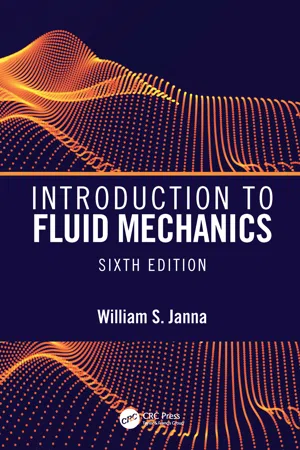Technology & Engineering
Flow Over Body
Flow over body refers to the movement of fluid, such as air or water, around a solid object. This phenomenon is important in engineering and aerodynamics, as it affects the performance and efficiency of vehicles, aircraft, and structures. Understanding the flow over body helps in designing streamlined shapes and reducing drag for improved functionality and energy efficiency.
Written by Perlego with AI-assistance
3 Key excerpts on "Flow Over Body"
- eBook - ePub
Automotive Systems
Principles and Practice
- G.K. Awari, V.S. Kumbhar, R.B. Tirpude(Authors)
- 2021(Publication Date)
- CRC Press(Publisher)
13 Vehicle AerodynamicsOutcome
Learning Objectives- Basics of aerodynamics
- Fundamentals of air flow
- Wind tunnel testing
- Aerodynamics of passenger and commercial vehicles and two-wheelers and their drag reduction techniques
13.1 Introduction
Moving vehicles are always subjected to air flow, which may have an adverse effect on fuel economy, vehicle performance, noise level, road holding and stability. This opposing force of air, frontal area of vehicle exposed, are directly associated with the aerodynamics. So it is essential to provide the styling to the vehicle with accommodating functional power train, suspension elements, passenger as well as luggage space engine, wheels etc. Aerodynamics is the branch of the science which deals with solid bodies moving through the atmosphere and the interaction between body surfaces and surrounding air with varying relative speeds and wind direction.13.2 Air Flow Fundamentals
When a vehicle is subjected to air flowing in the surrounding, then air will pass the vehicle and around as well as through the vehicle. Air has viscosity as well as inertia, and as a result this there is friction between adjacent layers and loss of energy.Air flowing around the solid body, forms a thin boundary layer between the main stream and surface of a body. There is a relative motion between adjacent layers of the body and the surface of the body within the boundary layer. In the case of laminar flow of air, there is a shearing of adjacent layers of air. The velocity of the layer farthest away from the body surface up to unrestricted flow is having highest velocity and at the surface it will be zero. This is because the layer of flowing air comes in contact with the surface of the body, the air particles loosely attaches this viscous drag to the surface resulting in zero velocity at the surface. The velocity of the adjacent layer is slightly higher as it slides over the surface. The general characteristics of air flow are as follows: - eBook - ePub
- William S. Janna(Author)
- 2020(Publication Date)
- CRC Press(Publisher)
6 Flow over Immersed BodiesIn this chapter, we examine the forces that are exerted on a body moving through a fluid. Consider, for example, a wing or airfoil moving at a velocity V through air. For convenience, and in keeping with the control volume approach, we impose a velocity on the system equal to −V , thus rendering the airfoil stationary while air moves past the wing. The air velocity is given the symbol U , or U ∞ , to denote this transformation. The forces of interest are the forces that act parallel and perpendicular to the principal airspeed direction. These forces are that the drag and lift forces as illustrated in Figure 6.1 .After completing this chapter, you should be able to:FIGURE 6.1 Forces acting on an airfoil. (a) Airfoil moving in air and (b) control volume with airfoil stationary.- Describe the effects that cause lift and drag forces to be exerted on immersed bodies;
- Sketch boundary layer growth in flow over a flat plate;
- Calculate data on drag of variously shaped bodies;
- Recognize the concept of streamlining;
- Determine the cause of lift and drag on different airfoils.
6.1 Flow Past a Flat Plate
In this section, we examine flow past a flat plate, with particular interest in the fluid velocity in the vicinity of the plate surface. Consider uniform flow passing over a flat plate that is aligned parallel to the flow direction. The leading edge of the plate is sharpened so that flow past the upper surface (our region of interest) encounters no interference that a blunt leading edge would provide. Upstream of the plate, the flow is uniform with a velocity equal to U ∞ . The flow is laminar near the leading edge of the plate. Somewhere downstream, the flow becomes turbulent. The region between the laminar and turbulent zones is a transition zone. See Figure 6.2 .FIGURE 6.2 Growth of the boundary layer along a flat plate. The vertical scale is greatly exaggerated.Along the plate surface, the velocity is zero due to the nonslip condition. The velocity profile increases from zero at the wall to the free stream value or nearly so at a certain vertical distance from the plate. This vertical distance, called the boundary layer thickness δ, is shown schematically in Figure 6.2 . Also shown in the figure is a depiction of the laminar and turbulent velocity profiles. Figure 6.3 - eBook - ePub
Understanding Aerodynamics
Arguing from the Real Physics
- Doug McLean(Author)
- 2012(Publication Date)
- Wiley(Publisher)
Chapter 5 General Features of Flows around BodiesIn Chapter 4, we looked in considerable detail at the physics of the flow closest to the surface of a body, in the viscous boundary layer. In this chapter, we explore the generic characteristics of the entire flowfield in external flows around bodies, in preparation for more detailed discussion of specific aspects such as drag and lift in following chapters. While the basic physical laws (the NS equations: Navier-Stokes) govern all of the flow phenomena we'll look at, the equations by themselves won't help us much in our quest for intuitive understanding. As we saw in Chapters 2 and 3, there is just too much of a gap between the simplicity of the local physical laws and the potential complexity of the flow phenomena that they govern for us to be able to get much from the equations by mental exercise alone. Our discussion will therefore rely heavily on knowledge of phenomenology, that is, what actually happens in real flows. But we'll try to get beyond just describing what happens and understand why things happen the way they do. Some of the flow features we'll consider will seem at first to be trivial or obvious, but I'll ask you to bear with me. We'll find that explaining the “why” of even the most obvious flow features can be surprisingly tricky.For purposes of this discussion, we'll put ourselves in the body-centered reference frame and assume the flow can be treated as steady. The unsteadiness in turbulent boundary layers and wakes will usually not be of direct interest to us because of the small length scales and short time scales involved. For most of the flow phenomena we'll look at, we'll be concerned with only the time-averaged effects of turbulence, which, as we saw in Section 3.7, are essentially the same as if there were local increases in the coefficients of viscosity and thermal conductivity. In terms of time-averaged effects, turbulence will have a qualitative effect on a flow only when it affects the pattern of boundary-layer separation, an issue we'll return to several times in the remainder of the book.
Index pages curate the most relevant extracts from our library of academic textbooks. They’ve been created using an in-house natural language model (NLM), each adding context and meaning to key research topics.
Explore more topic indexes
Explore more topic indexes
1 of 6
Explore more topic indexes
1 of 4


